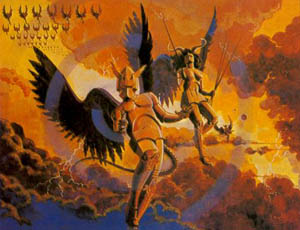|
|
Atari 8-Bit Prototypes
|
|
Launched in 1979, the Atari 8-bit computer line contained some of the most advanced computers of their time. Sleek, stylish, and powerful, these marvels of the computing world introduced thousands of people to world of computers. Many of today's finest programmers got their start programming on an Atari 8-bit computer. Second only to the venerable 2600 VCS, the 8-bit computer line was one of Atari's longest lasting series of products, running from 1979 to 1989.
Although the 8-bit computer line was aimed at home and business productivity, users quickly found out that it was also a very powerful game machine. Using a new high-end chipset designed by the same team who created the 2600, the 8-bit computer line was leaps and bounds above other game systems of the time. Although Atari manufactured numerous games for the 8-bits, they never marketed them as game machines. This was due to Atari not wanting to hurt sales of its other major product, the 2600. However this all changed in 1982 when Atari took a slightly modified Atari 400 computer, removed the keyboard, and called it the Atari 5200 Super System. But that's another story.
Since the Atari 8-bit computer line was so similar to the Atari 5200, almost all the games are direct ports of each other (with some differences) . Programmers would generally start a game out on the 5200 (which was considered to be the more important 'game' system), and then had it ported to the Atari 8-bit computers (with a few exceptions). This is why there are far more Work In Progress prototypes for the 5200 then there are for the Atari 8-bits. However since the 5200 wasn't the smash hit that Atari had hoped, this practice died out in late 1984. All post crash releases (86-89), and several late 84 releases were Atari 8-bit only.
Because the 8-bit computer line lasted so long, there were several different models designed over the years (although only about half were actually released). The 8-bit computer line started out with the Atari 400 and 800 in 1979 (code named Candy and Colleen). These powerhouses contained 16K and 48K respectively, and are capable of running much (but not all) of the available 8-bit software. In 1982 Atari decided to shake things up with the new XL series (eXtended Line). The first computer in this new line was the 1200XL, which was almost an immediate flop due to its closed case design and compatibility issues. After the 1200XL debacle, Atari released the 600XL and 800XL systems to replace its older 400 and 800 models. These new systems came with an updated OS and more memory (16K or 64K), and sported the new Parallel Bus Interface, which allowed users even more expansion options. The 800XL became the most popular system in the 8-bit line due to its low cost and compatibility with just about all of the available 8-bit software (although a few early games do not run properly on the new OS). In 1985 Atari released it's last line of systems called the XE line (XL Enhanced). The 65XE and 130XE were cheap replacements for the 600XL and 800XL with only minor enhancements (more memory and new peripherals).
Atari's final 8-bit line system was the Atari XEGS (XE Game System). Launched in 1987, the XEGS was the first (and only) system in the 8-bit computer line to actually be advertised as a game system. The XEGS was created solely to compete with the NES and SMS (along side the 7800). The XEGS was basically a repackaged 65XE with Missile Command built in. However since the XEGS was using virtually the same technology as the 400/800 did in 1979, it looked and felt very dated. To compensate for the lack of power, Atari released many new game cartridges in an attempt to wow gamers with the number of available titles (quantity not quality). Unfortunately most of these 'new' games were simply ports of games that had been available on tape and disks years earlier, although a few new original titles managed to slip in. In 1989 the XEGS and the entire 8-bit line were quietly cancelled, bringing to an end one of the most impressive series of computers in gaming history.
Due to the sheer number of 8-bit titles existing on cartridge, tape, and disk (well over 3,000), I will be concentrating solely on prototypes for games that were to be released on cartridge unless otherwise noted.

